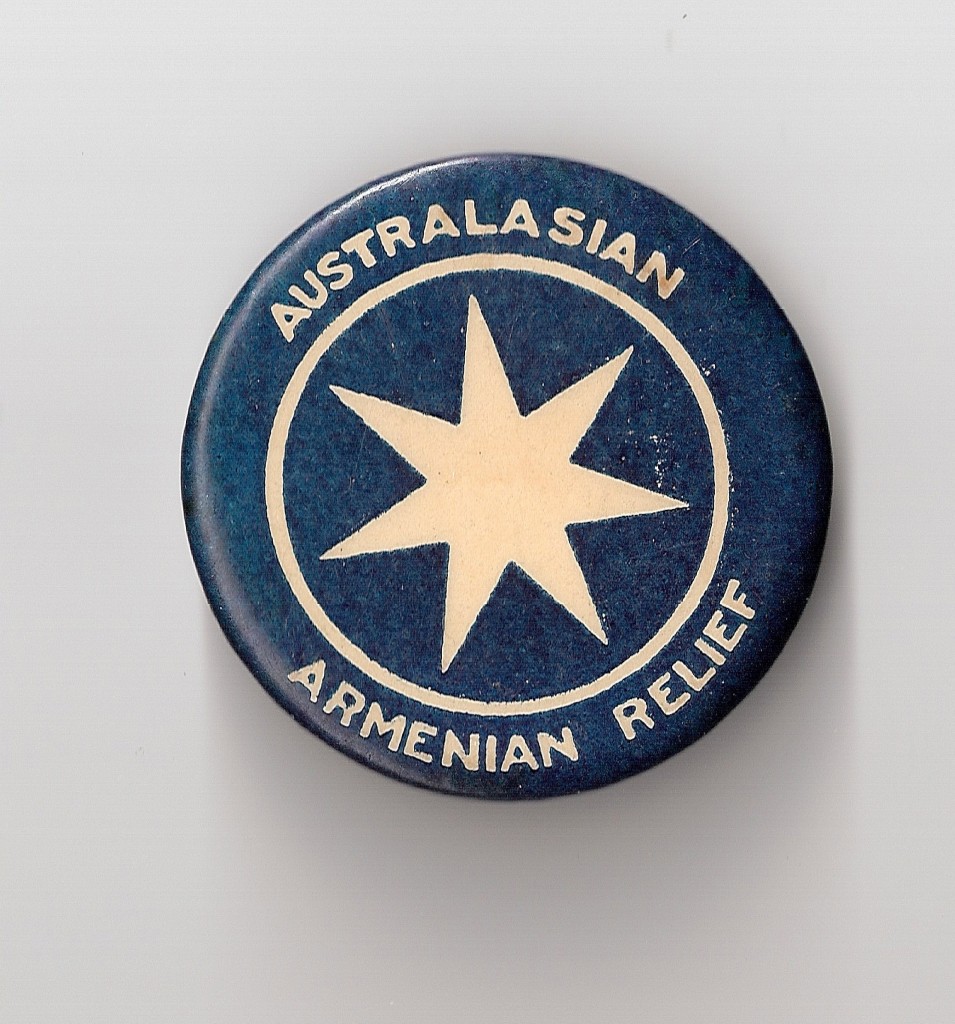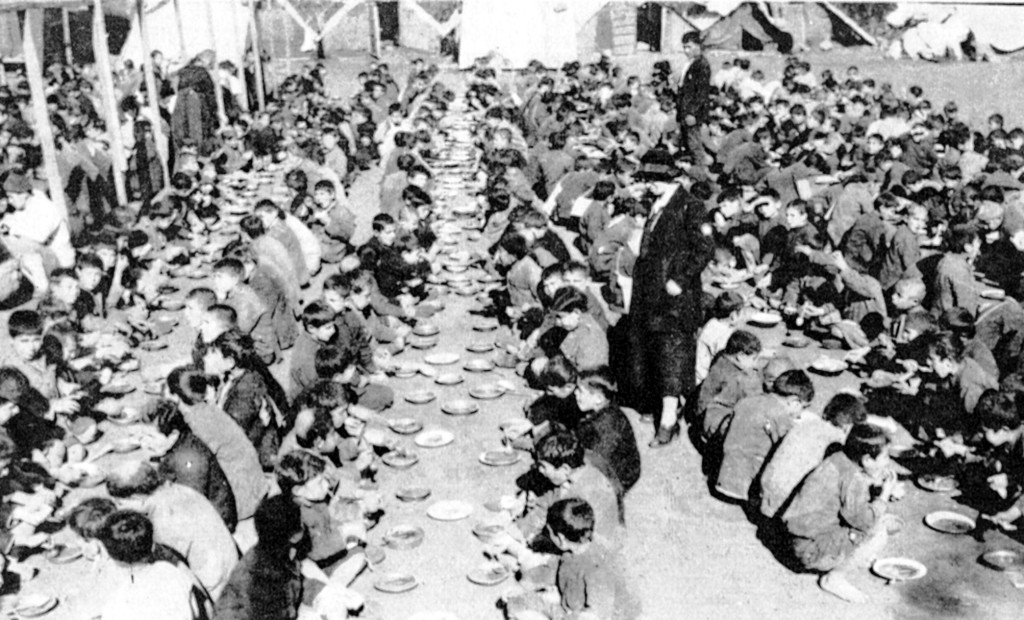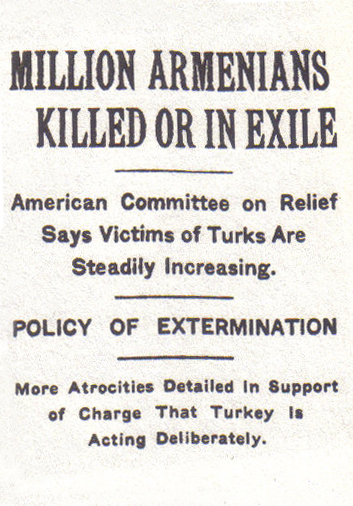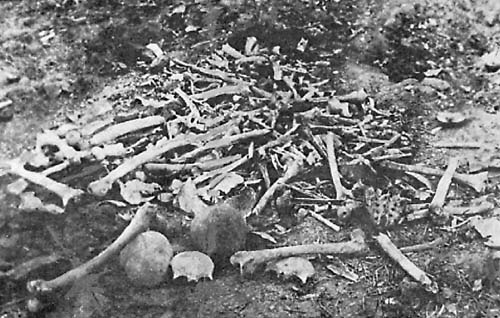Babkenian, Vicken & Peter Stanley
‘”Armenian propaganda uses the ANZAC [sic]”: A response’, Honest History, 19 May 2016
The Australian Turkish Advocacy Alliance (ATA-A) website has published a review of Armenia, Australia and the Great War, by Vicken Babkenian and Peter Stanley. The book was launched in Sydney on 17 May 2016 by Gladys Berejiklian MP, Treasurer, Minister for Industrial Relations and Deputy Leader of the Liberal Party in New South Wales.
The ATA-A review is unfavourable; even damning. Authors are often urged not to respond to unfavourable reviews, but the book’s authors think that the anonymous review posted on the ATA-A website demands a response, if only to register the authors’ disagreement with both the review’s content and its author’s attitude toward history. The original review, with the apparently incomplete heading ‘Armenian propaganda uses the ANZAC [sic]’ is here. Below is the review with our comments interpolated in italics and within brackets.
Vicken Babkenian and Peter Stanley
18 May 2016
________________________________________
‘A RELIC OF THE ARMENIAN MASSACRES AT ERZINGAN. Such mementos are found all over Armenia’ (Wikimedia Commons/Ambassador Morgenthau’s Story. Henry Morgenthau was American Ambassador to Constantinople 1913-16)
‘Friends tell the truth’ but don’t let the truth spoil a good story!
History without contextual understanding serves to no purpose, else than furthering the narrator’s biased agenda. Most of the respected academics today are aware of the hardships of understanding the events of the past. As more research done on contentious subjects such as the events of 1915, the debate grows. Some documents are proven to be false or numbers are being challenged. New evidence provides new perspectives to singular events that shape the understanding of bigger tragedies.
[All true, and we contribute to that process of offering new evidence and interpretation and participating in debate.]
Professor Peter Stanley and his prodigy [the reviewer means ‘protégé: it’s not likely he’s praising Vicken as a genius] Vicken Babkenian co-authored a book called Armenia, Australia and the Great War. The aim of the book is not to further our understanding of the events of 1915. The authors aim to draw Australia into a foreign and contentious debate. They want Australians to have a biblical belief in their side of the story.
[Actually the aim of the book is to further debate, and on the basis of substantially new evidence and new arguments about the Australian response to the Ottoman Empire’s attempt to destroy its Armenian population, before, during and after the Great War. We want to give Australian readers a chance to consider what we propose and to make their own minds up.]
Babkenian and Stanley are using media and the floors of NSW Parliament with the support of the Armenian lobby, to ‘lecture’ Australians about how to see the events of the past.
[This is made to sound sinister, but what authors don’t seek to disseminate their views? But we’re not seeking to ‘lecture’: we seek to inform, advise and, yes, to persuade. Like all historians worth the name we put a case and are not abashed at that.]
The book, sadly, does not provide any new evidence to the case.
[Actually it does offer new evidence, and it marshals evidence previously unavailable or only available in largely untapped primary sources’.]
It only builds a new narrative by using ANZACs for the same old tale.
[‘Anzacs’, but we know who he means. And yes, we do deploy evidence from, by and about Anzacs to show that Australians witnessed and succoured Armenian victims of Ottoman oppression.]
Stanley writes in his Epilogue:
‘We are told by deniers that it can’t be genocide because there is no evidence … it is true there is no single document … the absence of proof, as historians say, is not proof of absence.’ (p. 280)
By deniers, he means us, the Australian Turkish community, and freethinking people who question mainstream narratives.
[Well, not the entire Australian Turkish community: Turkish Australians attended the launch and had no difficulty with us raising this issue: so, some Australian Turks.]
First of all, one should not forget that we do not deny great tragedies happened during the collapse of the Ottoman Empire. Millions of civilians living peacefully for centuries under Ottoman rule had to flee brutal uprisings, wars. However, Armenians in [the] Diaspora continue to raise their pain above others’ and want the world to recognize a tragedy that affected more than five million people as theirs and theirs only.
[This is a distortion of our book, and not a view we put or would endorse. Actually we do acknowledge that many Turkish civilians died during the Great War, of famine, disease and military action – including in atrocities perpetrated by Armenians and others. But our book is about Armenians and the Great War: you wouldn’t be surprised that it focuses primarily on them.]
 Australasian Armenian Relief Fund badge, Atkinson & Co. Adelaide, c. 1922-23 (Vicken Babkenian)
Australasian Armenian Relief Fund badge, Atkinson & Co. Adelaide, c. 1922-23 (Vicken Babkenian)
To this date, as Stanley points out, genocide advocates failed to provide one single official document that would prove Ottoman government’s intention was to exterminate Armenians in 1915 or any other day.
[No, that’s not what we wrote. We did not write that there was not ‘one single document’ supporting the view that the deportations and massacres were ordered from Constantinople: we wrote that there was ‘no single document’ incriminating the Committee of Union and Progress government ordering the massacres: that’s not the same thing at all. There are thousands of records that document the process of what we now call genocide: but there is no equivalent of, say, the 1942 ‘Wannsee Conference’ minutes that record the genesis of the Holocaust.]
According to the respectable international courts, genocide is a precisely defined legal term and one has to prove ‘intent’ for the destruction of a community for any event to be labeled as genocide. This crucial point is the most contentious part in this debate. There is not a single official document that can be used as an evidence of the Ottoman state intention to destroy Armenians and Stanley agrees to this.
[No we don’t. As we write, we’re not lawyers and we’re not bound by legal procedure. Our criterion as historians is pretty straightforward: did the genocide occur? Yes, unquestionably. We leave the lawyers to argue the toss. We aren’t going to hide behind legalism which lacks common sense or humanity.]
The British released Ottoman POWs and bureaucrats accused of carrying out crimes against humanity from Malta due to lack of evidence in 1921. Although the British High Command in the capital city of the Ottoman Empire, Istanbul [at the time, Constantinople], as victors and occupiers had access to every document in government archives, they failed to find one single document that could be used against those in Malta.
[There were pragmatic political/diplomatic reasons for Britain releasing those accused and held in Malta; it was part of a deal with the Turkish nationalist government in Angora (later Ankara). It had nothing to do with the strength of the evidence. The fact is that in 1919 Turkish courts tried and convicted officials of crimes against Armenians and it is simply misleading to represent it otherwise.]
We do not deny the suffering of all parties involved. [And nor do we.] We say both parties suffered and Ottoman courts in fact punished dozens of its own officers to death for misconduct during deportations. However, labeling those events as ‘genocide’ is legally wrong and misleading.
[Armenians and Turks – and Greeks and Assyrians and others – suffered. But only the Armenians – and Greeks and Assyrians – were murdered by their own government: that’s the essential difference. And the scale of their deaths and the Ottoman state’s intention to destroy them justifies calling it ‘genocide’. Raphael Lemkin’s original (1944) definition of ‘genocide’ was based on his analysis of the Armenian experience at the hands of the Ottoman state.]
Stanley accuses those who challenge Armenian narrative and his own convictions almost as being morally inferior. He writes in his Prologue: ‘We will not be drawn into the unnecessary argument over whether the Armenian genocide happened. That debate is over.’ (p. 5)
[That’s not a moral judgment: it’s an historical assessment. With the exception of a few, mostly Turkish, diehards, the world’s historical scholars essentially accept that from 1915 the Ottoman state tried to destroy its Armenian people: that argument is overwhelmingly accepted. It’s formally illegal to say so in Turkey; but not in Australia.]
This attitude against debate is preventing efforts to reconcile. He continues in the Epilogue: ‘because the two sides cannot be both right …’ and attempts to build a dichotomy. ‘You are either with us or not’ style rhetoric is not the way to find the truth. We call the events of 1915, a botched deportation during a time of chaos. They call it ‘genocide’. The intention behind this necessary operation aiming at improving national security was not ethnic cleansing, a fact that had been proven over and over again.
[‘A botched deportation’ is a mendacious euphemism and is simply incorrect. In that most Armenian men were killed at the beginning of their eviction – in strikingly similar ways across the Empire – suggests that the process was not ‘botched’ but was executed in accordance with orders from the highest quarters – and the abundant documentary evidence supports that view.]
Vicken Babkenian’s credibility, even as an amateur historian, is also questionable. His lack of discipline as an academic is evident in his style of presenting events.
[This is what’s known in the historical trade as an ‘ad hominem’ attack: on the football field it’s known as ‘playing the man’. But Vicken has published more refereed articles in academic journals than has Stanley – he’s not an institutional ‘academic’, but he’s hardly an ‘amateur’ either.]
Even in his first pages, he proves his weak research skills or intention to manipulate numbers. Babkenian writes: ‘… Armenian migration that today has culminated in an Armenian-Australian community of over 50,000 people …’
According to a study of latest census in 2011 released by Department of Immigration and Border Protection, there are 16,723 people define themselves as Armenian by heritage or ancestry. Armenians in Australia, use this ‘50,000’ number very often, like the 1.5 million, the number they use to quantify victims of the events of 1915 to back their claims.
[And not just ‘their’ claims: it’s the figure pretty much accepted world-wide.]
Turkey and ‘genocide denier’ historians challenge this figure as well. After all Vicken Babkenian presents himself as a researcher at the Australian Institute for Holocaust and Genocide Studies, an organization which is registered to an address Morayfield, Queensland.
[This criticism is nonsensical. Armenians have migrated to Australia from more than forty-three countries, speaking thirty-five languages. Census figures only include those who make a conscious effort to indicate they have specifically Armenian heritage. It does not reflect the total number of Australians who have Armenian ancestry (which is usually given as 50,000). The actual number makes no difference to the story we tell about Armenia, Australia and the Great War or the arguments we put. And what’s the implication that an address is Morayfield is somehow questionable?]
 Australian Hilda King watching Armenian orphans during meal time at the Australasian Orphanage, Antilyas, Lebanon, c. 1923 (Nellie Miller Mann Collection; courtesy of David Mann)
Australian Hilda King watching Armenian orphans during meal time at the Australasian Orphanage, Antilyas, Lebanon, c. 1923 (Nellie Miller Mann Collection; courtesy of David Mann)
Babkenian, from time to time contradicts, discredits his own resources [presumably ‘sources’]. He outlines the details of the War Precautions Act and writes about government led censorship and propaganda through newspaper articles during war years. ‘… the state capitals’ daily newspapers were conscious of their patriotic and imperial mission.’ (p. 102) Yet the same chapter has 21 references, 11 of which are those same newspapers and articles published in those newspapers.
[Actually we shared the research and writing, and the sentence quoted was written by Peter Stanley. That Australian newspaper reports were indeed influenced – skewed – by imperial and patriotic impulses does not mean that everything they published was unreliable. Each report must be considered on its merits. We quoted reports that we decided were essentially reliable. Indeed, in aggregate, the striking feature about the reporting of the deportations and massacres from 1915 is their consistency and coherence and how they accord with evidence gathered at the time and now available in archives. Trying to discredit our use of contemporary sources like this is a pretty cheap ploy.]
We could go on more and more about the factual mistakes, missing context and racist narrative in the book, but authors also pre-emptively close any prospects of a debate, so we will leave it here.
[Again, implying that there are numerous and grievous errors is a sly tactic. We don’t say that we don’t make mistakes – there’s a word for authors who make no errors: it’s ‘unpublished’. But if we have made mistakes tell us and we’ll check, comment and if necessary correct them.]
Armenia, Australia and the Great War is a book that aims to force you to pick a side on a foreign and contentious debate by using the ANZACs. [Again, it’s actually ‘Anzacs’.] It serves to no constructive purpose that would help both communities to reconcile and work together for a better Australia.
[We disagree: putting a case that the genocide occurred, that it was witnessed and succoured by Australians serves the purpose of informing Australians today that the Great War was a complex matter, and that Australians were a part of that story. This view has not before been put. Our view makes a contribution to historical knowledge and interpretation. A ‘better Australia’ would be one that looks at history honestly.]
Never Again:
Genocide studies and academic debate are crucial for humanity to not to witness similar tragedies of the past again. International systems have been established to prevent civilians to be targeted by state apparatus or armed groups. Terms such as ‘ethnic’ or ‘religious cleansing’ should no longer be needed to define events we witness in the news. Unfortunately, all our attempts have failed so far to prevent crimes against humanity from happening again. Even after Rwanda, Serbia and Sudan; crimes against humanity are still being committed in large scales in Iraq, Syria and Somalia. [Sadly, this is true: we can agree on this.]
So, we have to ask the hard question to ourselves. Is it the ‘denial’ of labeling events of 1915 as genocide or other parties’ including Armenian’s self-claim of no responsibility to blame for such events to continue to happen today? [Probably not.] How much the biased reading of history prevents us to understand the real causes of great tragedies? [We don’t fully understand the question, but again, probably not much.] How much responsibility the super powers of the world bear in supporting ethnic and religious groups with arms and no action in supra-national institutions?
[Probably some: but we can’t agree that anyone but the Ottoman/CUP authorities were responsible for the events we now call the Armenian Genocide, and the Turkish government and adjuncts such as the ATAA are responsible for denying that it occurred, in defiance of the evidence.]
After all, without an open and honest debate, how can we find ways to stop tragedies as such to ever happen again?
[How indeed, but we’d contend that abusive reviews like this don’t assist that aim.]
Would real friends insult, intimidate or belittle you, when you ask questions?
[No; but real friends surely wouldn’t deny the undeniable. We’d be glad to debate this in another forum: if we knew who you were.]
 New York Times, 15 December 1915 (Wikimedia Commons/New York Times)
New York Times, 15 December 1915 (Wikimedia Commons/New York Times)
Note from Editor, Honest History
The anonymous ATA-A review of Armenia, Australia and the Great War is relevant to the concerns of Honest History (setting aside that the book’s authors are active in the Honest History coalition). The use of evidence and arguments about the Ottoman Empire’s destruction of its Armenian population, and the arguments deployed about what is now called the Armenian genocide should be of great interest to those concerned about the use of history, about arguments over the past and its relevance to the present and about Australia’s Great War and how (and what) is remembered.
Honest History exists to foster debate about the past. Vicken Babkenian and Peter Stanley have said they would be glad to debate this issue; there is a comments facility below.
